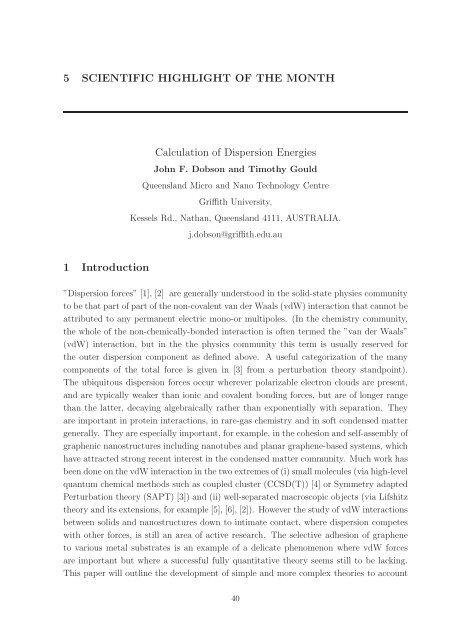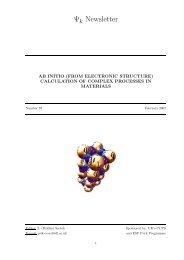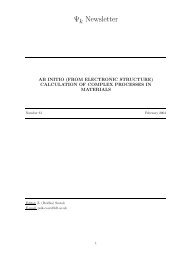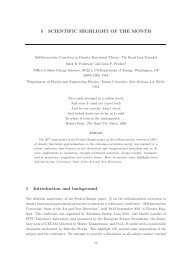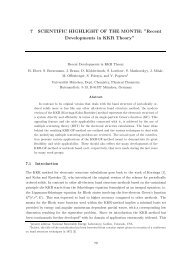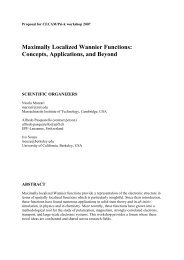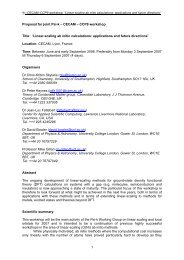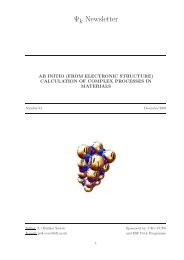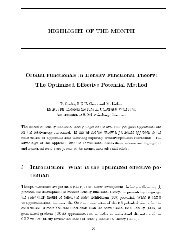Newsletter 107 - October 2011 - (pdf - 0.6 MB) - Psi-k
Newsletter 107 - October 2011 - (pdf - 0.6 MB) - Psi-k
Newsletter 107 - October 2011 - (pdf - 0.6 MB) - Psi-k
You also want an ePaper? Increase the reach of your titles
YUMPU automatically turns print PDFs into web optimized ePapers that Google loves.
5 SCIENTIFIC HIGHLIGHT OF THE MONTH<br />
Calculation of Dispersion Energies<br />
John F. Dobson and Timothy Gould<br />
Queensland Micro and Nano Technology Centre<br />
Griffith University,<br />
Kessels Rd., Nathan, Queensland 4111, AUSTRALIA.<br />
j.dobson@griffith.edu.au<br />
1 Introduction<br />
”Dispersion forces” [1], [2] are generally understood in the solid-state physics community<br />
to be that part of part of the non-covalent van der Waals (vdW) interaction that cannot be<br />
attributed to any permanent electric mono-or multipoles. (In the chemistry community,<br />
the whole of the non-chemically-bonded interaction is often termed the ”van der Waals”<br />
(vdW) interaction, but in the the physics community this term is usually reserved for<br />
the outer dispersion component as defined above. A useful categorization of the many<br />
components of the total force is given in [3] from a perturbation theory standpoint).<br />
The ubiquitous dispersion forces occur wherever polarizable electron clouds are present,<br />
and are typically weaker than ionic and covalent bonding forces, but are of longer range<br />
than the latter, decaying algebraically rather than exponentially with separation. They<br />
are important in protein interactions, in rare-gas chemistry and in soft condensed matter<br />
generally. They are especially important, for example, in the cohesion and self-assembly of<br />
graphenic nanostructures including nanotubes and planar graphene-based systems, which<br />
have attracted strong recent interest in the condensed matter community. Much work has<br />
been done on the vdW interaction in the two extremes of (i) small molecules (via high-level<br />
quantum chemical methods such as coupled cluster (CCSD(T)) [4] or Symmetry adapted<br />
Perturbation theory (SAPT) [3]) and (ii) well-separated macroscopic objects (via Lifshitz<br />
theory and its extensions, for example [5], [6], [2]). However the study of vdW interactions<br />
between solids and nanostructures down to intimate contact, where dispersion competes<br />
with other forces, is still an area of active research. The selective adhesion of graphene<br />
to various metal substrates is an example of a delicate phenomenon where vdW forces<br />
are important but where a successful fully quantitative theory seems still to be lacking.<br />
This paper will outline the development of simple and more complex theories to account<br />
40


